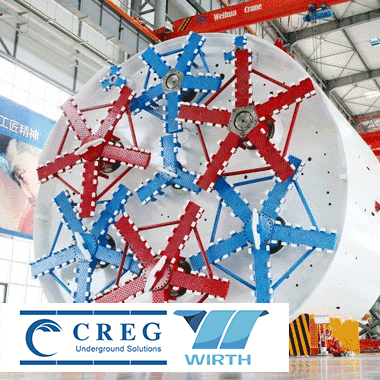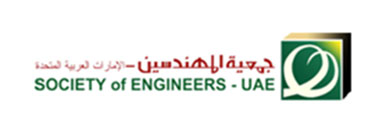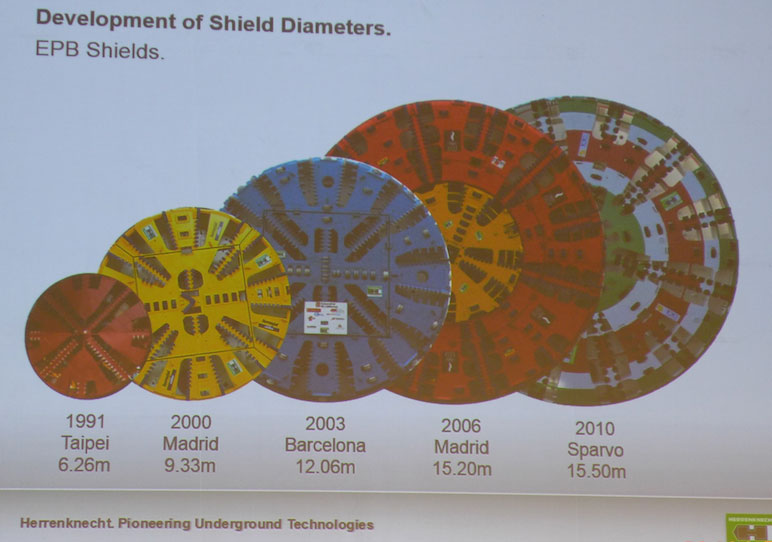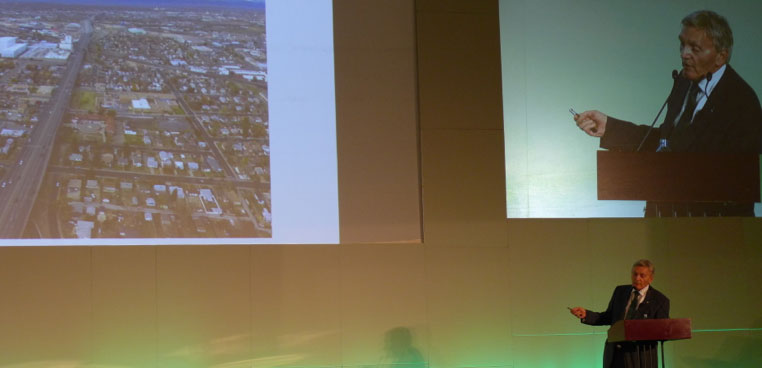Internationals address small Arabian delegation Dec 2014
Leading international speakers presented a programme of pertinent presentations to a limited audience at the second Arabian Tunnelling Conference (ATC) and exhibition event in Abu Dhabi. Organised by the Tunnelling Chapter of the United Arab Emirates’ Society of Engineers (SOE-UAE), and in partnership with the International Tunnelling and Underground Space Association, the event was inaugurated by His Excellency Engineer Essa Al Maidoor, President of SOE-UAE and Director General of Dubai Health Authority. A delegation of high officials from various government and private entities also attended the opening ceremony and awards presentations before leaving for more pressing engagements.
Organisation in the same week of a conference on tunnelling and transportation by a competing group in Dubai was one of a number of factors that came together to limit delegate numbers. Another factor was the timing of the event – just a week after the 43rd UAE National Day holidays – as well as the decision to host the event in the UAE national capital of Abu Dhabi rather than in the commercial centre of Dubai, which was the location of the inaugural ATC event in December last year (2013). Although 350 delegates were said to be registered to attend, actual numbers appeared less and more so when set against the vast palatial surroundings of the Abu Dhabi National Exhibition Centre, a new high-rise development with the iconic Hyatt Hotel building on the main road to the airport.
These circumstances left the small number of delegates and the presenters and exhibitors to make the most of their discussions and networking time together across the two days of technical sessions and exhibition, and a third day comprising technical tours to the world-class Strategic Tunnel Enhancement Programme (STEP) sewerage project in Abu Dhabi and to the control rooms of the 2.2km long Sheikh Zayed cut-and-cover highway tunnel in central Abu Dhabi.
In his opening address, SOE President Al Maidoor said that “the United Arab Emirates has leadership characteristics that have helped us advance its position at the global level”, with the UAE now “ranked first in the world in terms of quality of roads and third in the world in quality of overall infrastructure on the Global Competitiveness Index (GCI) for 2014-2015”. He highlighted the 1,200km-long Etihad Rail network that will be built in three stages to link the principal UAE entres of population and industry, and form a vital part of the wider Gulf Cooperation Council (GCC) railway network that will connect the UAE with Saudi Arabia, Qatar, Oman, Bahrain and Kuwait. Opening the exhibition, he mentioned to TunnelTalk that the Abu Dhabi Metro “remains in planning”.
Søren Eskesen, President of the ITA, replied in his opening address that “tunnelling has been part of the UAE’s unprecedented urban growth to date and will be of increasing importance to future expansion”. He added that the ITA participation and partnership in the Arabian Tunnelling Conference series is an indication that the UAE has become an important partner in the international association and that it has a role to play in the promotion of the tunnelling industry on the world stage.
Part of the opening ceremony involved presentation of four tunnelling awards by the SOE-UAE. Best Tunnelling Project Manager was won by Robert (Bob) Marshall of CH2M Hill, who worked for seven years on the management team of the STEP project. Marshall is now in the UK and working on the Thames Tideway project and his award was accepted on his behalf by Martin Knights, a main speaker at the conference and a senior director of CH2M Hill in the UK. Best Sustainable Tunnel was awarded to the Abu Dhabi Municipality for the Sheikh Zayed highway tunnel project; while Best Tunnel Design was awarded to Sharjah Roads and Transport Authority for the Khorfakkan road tunnel. The Best Tunnel Innovation was awarded to the Dubai Roads and Transport Authority (RTA) for the Dubai Metro.
Following the opening formalities, the first lecture of the technical sessions by ITA President Eskesen of Denmark highlighted the technical challenges faced by the Copenhagen Cityringen Metro project. The message of the presentation was to get metros into the underground space before cities become too big and too congested, making the siting of stations and the progress of tunnel headings exceedingly difficult amid and beneath historic buildings and other sensitive urban infrastructure.
A presentation by Arnold Dix of Australia, who is currently based in Dubai, described the potential use of underground space from an Arabian perspective. The GCC region is one of the most hostile environments for human habitation, he said, with its hot desert climate, its lack of water and vegetation, and its dusty atmosphere. The difference for the GCC, as compared to other hot desert regions of the world, he explained, is GDP and the conversion of this wealth into the lifestyle of the modern high-rise urban centres that identify the region. “As well as using the underground for efficient transportation facilities, this wealth could be used to fund the underground growth of food with the advantages of 70% lower water consumption, a more limited need for pest control, a constant temperature and the controlled climate that an underground facility would offer, providing for more reliable and higher yield crops. A change of public perception in the future could celebrate fabulous underground structures in just the same way as the iconic high-rise buildings of the skyline are celebrated today,” said Dix.
In two interesting presentations by local engineers, Eng Hamad Al Jeaidi described the operation, maintenance and safety procedures of the Sheikh Zayed road tunnel in Abu Dhabi; while Eng Abdulla Al Derei detailed the use of microtunnelling and HDD for 78 road crossings for a long gas-pipline project.
In the afternoon Jenxiu Jenny Jan of China explained the excavation of two long, twin-tube inter-city railway tunnels on the 96km network with 21 stations that will link the three cities of Changsha, Xiangtan and Zhuzhou in Yunan Province – with a total 16.45km being excavated by TBMs and conventional open face sequential excavation.
In her presentation, Dr Karin Bäppler of Herrenknecht described the growing demand for very large TBM diameters and the technical challenges involved.
Davorin Kolic of Croatia gave a presentation about early soft ground tunnelling machine projects in Europe before extending an invitation to attend the ITA World Tunnel Congress next year in May 2015 in Dubrovnik, Croatia.
A particularly interesting paper about a 10km long continuous conveyor muck hauling system through the streets of an urban area to eliminate thousands of truck trips on a metro project was presented by Pierre-Alain Scherwey of Switzerland. To be successful and used to its full potential, such a system would require the involvement and approval of the application by the project owner from the early planning stages and as part of installed infrastructures to be used by the contractor winning the metro construction contract.
Three technical materials presentations were delivered by:
- Karl-Gunnar Holter, about particular discoveries concerning the behaviour and durability of spray-applied waterproofing membranes as part of his PhD doctoral studies;
- Benoit De Rivas, about the performance, testing and design code specifications for precast concrete segmental linings reinforced with high-strength steel fibre reinforcement; and
- Wolfgang Angerer, who explored the use of geopolymer concrete as a sustainable material for precast concrete segments when reinforced with steel or synthetic fibres.
Peter Reinke of HBI in Switzerland presented an interesting paper about the aerodynamics associated with long high-speed railway tunnels; and Martin Knights took the audience on a world tour of current, planned and futuristic underground projects designed to secure sustainable urban environments.
Several other important lectures on relevant topics were presented by local and international speakers before the technical conference was closed out on the second day with a presentation from Nick Chittenden, who emphasised the importance of operator training and the constant monitoring of performance to achieve cost-effective, efficient and high-quality shotcrete applications. A shotcreting simulator on the BASF stand allowed delegates and visitors to try their hand at operating a shotcreting nozzle and have their performance monitored and documented as either efficient or wasteful according to a design thickness criteria.
One of the most well-attended sessions of the event was the Young Engineers’ Forum. As part of an ongoing initiative by the SOE-UAE to develop the skills and expertise of its students of engineering, the session was attended by about 150 students from various universities in the region, and followed a programme that included an introduction to tunnelling by Edgar Small; geological aspects of tunnel engineering by Jonathan Cottam; and the importance of underground space as a real estate resource by Olivier Vion. The session concluded with a panel discussion about career development with Jurij Karlovsek, Chair, and Petr Salak, Vice Chair of the ITA Young Members Group contributing to the lively dialogue.
Although disappointing in terms of delegate numbers, the event proved useful to those who did attend and a wasted opportunity for those who missed the chance. SOE-UAE, however, remains committed to the series and plans another event for 7-8 December next year (2015) in a UAE venue yet to be confirmed. The ITA also remains committed to the GCC region and the efforts of the UAE as one of the newest of its 71 Member Nations. Maged Farouk Hanna, General Manager of the SOE-UAE, also confirmed the plan by the SOE-UAE and its Tunnelling Chapter to bid for the staging of the ITA WTC in 2020 – the same year that Dubai will host the World Expo. For the bid to attract a greater degree of success, the SOE-UAE would do well to reach out to its GCC neighbours to make it a region-wide invitation. There is no doubt that the whole Middle East area will be engaged in building extensive tunnelling projects in the years to come.
References
- Arabian aspirations for greater integration – TunnelTalk, Dec 2013
- Final tunnel awards on giant STEP project – TunnelTalk, January 2012
- Reviving the Saudi trans-peninsula rail link – TunnelTalk, September 2013
- Greek/Turkish JV takes Doha Gold Line – TunnelTalk, May 2014
- Soft ground challenge for Doha TBMs – TunnelTalk, February 2014
- Herrenknecht sweeps Doha Metro Phase 1 – TunnelTalk, January 2014
- Doha rolls out metro contracts – TunnelTalk, June 2013
- Gulf project boom fuels Herrenknecht expansion – TunnelTalk, January 2013
- First NFM TBM to Saudi Arabia for Riyadh Metro – TunnelTalk, April 2014
- Riyadh Metro moves into construction – TunnelTalk, July 2013
|
|
|
|
|
Add your comment
- Thank you for taking the time to share your thoughts and comments. You share in the wider tunnelling community, so please keep your comments smart and civil. Don't attack other readers personally, and keep your language professional.









